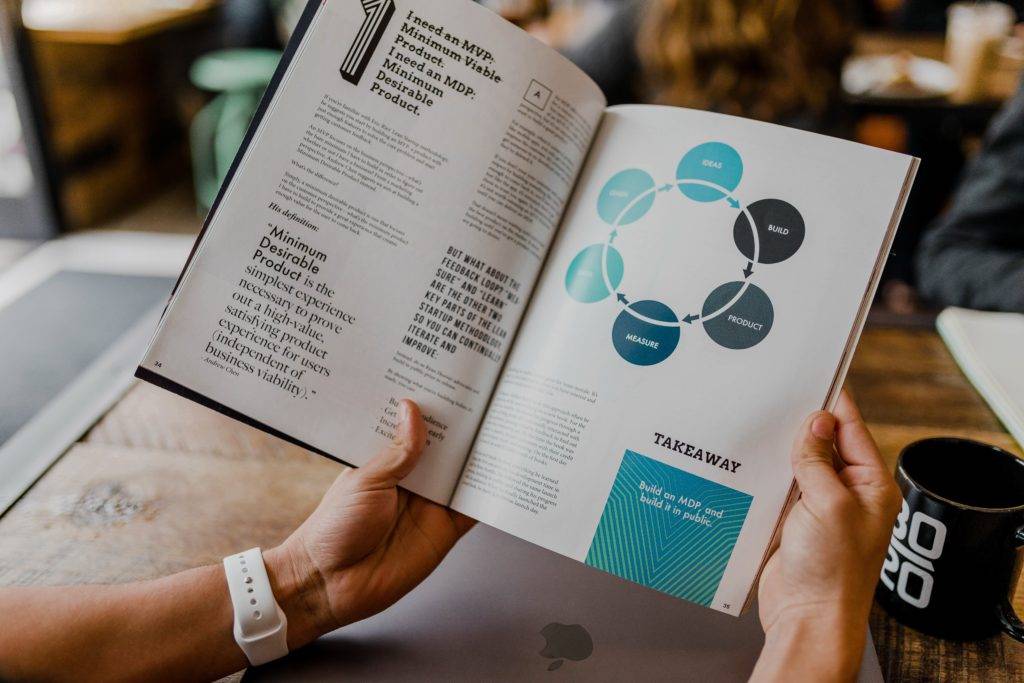Sales teams love revenue numbers, yet when it comes to achieving them, they often fail to reach their goals. Isn't it ironic? But don’t take our word for it; HubSpot found that exceeding sales targets and quotas remains a key sales goal for businesses, yet 40% fail to meet their revenue target.
In most cases, poor sales pipeline management keeps teams back. If your sales are stagnating and you're looking for ways to boost performance, you need to address ways to manage your pipeline better—after all, managing your sales pipeline effectively is crucial to your success.
From administration issues to failures in following up, scrutinizing your sales pipeline can help identify where the bottlenecks are occurring and what's preventing you from achieving your goals.
In this article, we'll give you a comprehensive sales pipeline definition, shed light on the difference between a sales pipeline and a sales funnel, explore sales pipeline stages and explain precisely how you can manage your sales pipeline to optimize your sales performance.
What is a sales pipeline?
Before launching into actionable strategies, let's define a sales pipeline. A sales pipeline visually represents where your prospects are in the sales process. A quick look at the CRM and sales reps and managers can glance through whether the prospect needs more lead nurturing, is in the negotiation phase, or is ready to be closed.
Each prospect, however, moves through the stage of the pipeline at a different rate based on their level of interest, urgency, and amount of research they've done on a product or service.
Some, for example, may have a high level of interest and urgency and, armed with extensive research on the product, would progress quickly toward making a purchase. In contrast, others may have researched, but their urgency is relatively low and therefore show moderate interest and take a greater amount of time than others.
Either way, a sales pipeline provides deep insights to team members. It helps them establish an estimated number of deals or opportunities and how many will close and within what time frame, the status of each open deal, and steps that need to be taken to move them from being a prospect to becoming a lead. A sales pipeline is also a good indicator of sales opportunities and expected revenue, which helps sales managers be better at sales forecasting.
Sales pipeline vs. sales funnel
Sales pipeline and sales funnel are two terms used interchangeably in the sales world, but they mean different things.
Think of a sales pipeline as a conveyor belt, representing a potential customer's step-by-step journey—from initial contact to purchase- as they move through different stages of a sale. It also tracks the conversion rates as prospects either move forward or get disqualified, and it shows the actions taken by salespeople to move leads from one stage to the next stage.
For example, a lead enters the pipeline, gets qualified, receives a product demonstration, negotiates the terms, and eventually becomes a paying customer.
On the flip side, a sales funnel starts with a large pool of prospects and gradually narrows down to fewer actual buyers. For example, in an e-commerce business, thousands of website visitors might browse products, but only a fraction will add items to their cart, proceed to checkout, and complete a purchase.
Sales pipeline stages
Converting a prospect into a customer isn't easy, but it can be made easier if your organization has a streamlined sales process that makes it easier for them to say "yes."
Most companies commonly follow some version of the sales pipeline stages listed below:
- Prospecting and lead generation: In this stage, reps are casting a wider net to find a good product fit prospect or potential lead. This could be done through cold emails, LinkedIn (social selling), networking events, tradeshows & industry events or cold calls.
- Qualifying leads: Once the leads are generated, they must be qualified to determine if they’re a fit. This happens through inbound marketing/sales activities based on parameters set internally by your team. For example, a lead can be disqualified if they don’t have the required budget to buy a product or if your product does not offer key features that are needed for them at present.
- Initiating contact: Now, it's time to initiate contact. This involves getting in touch with the prospect to identify their pain points and unique challenges so reps can build a solid sales proposal later in the sales process. See our sales proposal templates.
- Scheduling a demo or meeting: The next step in the process is to meet the prospect and decision makers face to face, either in person or through video conferencing. This stage usually involves a demo or a customized walkthrough where you pitch your product.
- Negotiation: At this stage, salespeople handle objections and address challenges from prospects before they fully commit to the product.
- Closing the sales deal: The final stage is where the prospects sign the contract and turn it into a customer.
Sales pipeline stages differ from one company to another, and the steps you include in building yours will depend on the information you've gathered from past sales, the type of your business you operate, and your buyer's unique journey with your product.
For example, some companies have a stage in their pipeline for post-sales follow-up to allow for upselling opportunities for additional products or services. Others track referrals (and their sources in the pipeline as their likelihood of closing these deals may be higher than prospects who come in via cold outreach.
It's also important to remember that sales pipeline stages will vary if it involves several decision-makers, much like in enterprise sales, which follow complex sales cycles.
Shameless plug: Qwilr offers a robust enterprise sales template that quickly helps sales reps create an impressive, persuasive, and tailored proposal.
How to manage your sales pipeline to optimize your sales performance
A well-structured, optimized, and effective sales pipeline management system is crucial for any business to drive consistent revenue growth and achieve long-term success. But sales leaders often struggle with it as there are a lot of moving pieces and oftentimes it takes a while to get a workable process. The big question is, how do you streamline your sales process, prioritize leads, close deals faster, and ultimately boost your bottom line?
Below are ten best practices for improving your sales pipeline management. So, let's dive in and uncover the secrets to sales pipeline success!
#1 Lead follow-up
Can you imagine sending a perfect email, setting up a demo, and then doing nothing? This sounds like a bad idea, yet 48% of salespeople never even make a single follow-up attempt.
Following up on sales leads is a critical element of the sales process. Prospects have short attention spans and many competing priorities; this is why 80% of sales require five follow-up calls after the meeting. So don’t be afraid to be a little persistent. It might pay off. And if you’re in a sales leadership role, encourage your reps to stay the course and keep following up with their prospects.
Follow-up doesn’t have to take a long time to be effective. Today, it’s easy to automate personalized follow-up messages. How? Try these methods for effective, automated follow-up.
- Set reminders in your CRM system, so reps receive timely alerts to send an email or call the prospect.
- Integrate your sales CRM with your proposal software, so you can send a proposal immediately after ending a call. Your team will not only save time but can also personalize their proposals and collateral using CRM data, giving your brand a tailored and professional image. To see how Qwilr integration works with HubSpot and Salesforce, schedule a demo with our sales team.
#2 Shorten your sales cycle
There are many benefits of shortening the sales cycle. It accelerates revenue generation, improves sales efficiency, and increases customer satisfaction.
Quicker responses, faster problem resolution, and happier clients are just some of the advantages. Moreover, a shorter sales cycle lets your team focus on high-value prospects, enhancing sales productivity and win rates.
So how do you shorten the sales cycle at your organization, and does that mean bombarding your prospects with endless follow-ups? Not really. One way to do this is through automation, similar to what HR Collective—a full-service HR firm, did with its proposal creation process.
By integrating Qwilr with HubSpot, they were able to automate sales proposal production and send collateral out quicker, plus with Qwilr's interactive features (configurable pricing, deal acceptance, and e-signatures), they were able to reduce the unproductive back-and-forth that consumes both buyer and seller time. As a result, their proposal-to-close time has decreased by 20%.
#3 Create a standardized sales process
Creating a sales process is the most crucial step in their sales playbook for organizations. It helps them improve efficiency, customer satisfaction and, most importantly, adds to the bottom line.
Yet, many sales managers lean on sales leaders to implement it correctly. That's because building a successful sales process requires careful planning and strategy, ensuring that each step flows seamlessly into another without impacting customer satisfaction.
To create a standardized sales process, we suggest that sales managers work with their leadership to build out and follow a seven-step process:
- Preparation: The preparation phase is about identifying your target customers and understanding their needs and pain points.
- Prospecting: At this stage, sales teams identify and qualify potential leads based on their conversion likelihood.
- Approach: This is where sales teams initiate contact with prospects through phone calls, emails, or other channels.
- Presentation: Presentation requires skill and practice and is an essential step in the sales process. This is where sales teams showcase the product or service’s features and benefits tailored to the prospect's specific needs.
- Handling objections: When prospects have concerns or doubts, this is where sales provide reassurances or clarifications.
- Closing: The final step in converting a prospect to lead; this is where sales reps ask for the sale and utilize persuasive techniques to secure a commitment from the prospect.
- Follow-up: Finally, post sale step where sales reps follow up after the sale to ensure customer satisfaction and foster long-term relationships.
Whether your sales team operates remotely or from the office, your sales process must evolve as your company grows so that your team can continue to deliver on an optimal level.
This can be done by analyzing your current flow (what's working and what's not), carefully crafting the buyer's journey for your sales ICP, defining criteria for each step in the sales process, and, finally, looking at overall key metrics to make informed decisions.
#4 Automate your sales pipeline
According to Zapier, nearly 94% of sales reps waste their time on repetitive, time-consuming tasks. Juggling prospects at various stages of the sales process is daunting enough; therefore, automating what you can makes a lot of sense.
By implementing a robust sales automation process, you not only improve the productivity of your sales team but also give them extra hours to interact with prospects. The best bit? 65% of workers are less stressed at work because they automate manual tasks.
So what can you automate in a sales pipeline? If you haven't already, you'd be surprised at the sheer amount of day-to-day sales activities that can be automated.
These include:
- Installing chatbots to your website to answer repetitive questions about your products or services.They can also proactively engage every qualified lead, and sometimes even triage conversations automatically. Sales tools such as Intercom can be used to set this up quickly.
- Use email templates instead of creating new ones from scratch each time will also save your sales team a ton of time.
- Leverage your CRM to personalize campaigns, set automatic follow-ups with potential customers, track and nurture customers in your pipeline, and schedule and reschedule meetings. CRM software can also create tasks in the pipeline stages, help with post-appointment follow-up as well as help with lead scoring.
- Create proposal and collateral templates. Qwilr can help you automate the entire process through its proposal templates. Qwilr offers a robust template library that makes it easy for reps to quickly pull in commonly-used content blocks to sales documents. If you haven't yet, try the proposal automation software and book a demo with the Qwilr team today!
Automation will play a crucial role in your sales process, and while it requires adapting to new technologies and ways of working, in the end, the benefits are well worth the effort as reps will have more time to focus on their prospects.
#5 Analyze sales data
Without analyzing your sales data, you're shooting in the dark. Gathering accurate data will help you forecast better and improve results.
Monitoring key sales metrics like conversion rates, percentage of revenue from new and repeat customers, and win rates give you insights into your sales performance. Metrics such as average lead response time, percentage of qualified leads, percentage of leads dropped, and average deal size help you determine your sales team's effectiveness and where you might have opportunities for improvement.
For example, the higher the percentage of qualified leads, the more likely your sales team is to close deals and achieve their sales targets. If your team needs to improve on sales numbers, these metrics will allow you to focus on the areas that will have the most impact. Without this data, you’re just experimenting or guessing. And while experimentation can be good, having the data to plan focused experiments will set you and your organization up for success.
Your team's various sales tools can provide a wealth of data. Many have built-in analytics that provides vital insights into how your team is performing. For example, if using Qwilr for proposal creation, your sales team can see buyer engagement across all your sales material and get notified when a quote or proposal has been viewed and signed through its analytics dashboard.
Remember, with plenty of sales pipeline metrics, it can be truly daunting to separate vanity metrics from those that matter, so it's crucial to think about the metrics you’re using and how you’re interpreting them. Looking at an activity simply for the sake of completing it may not be the most effective; look at data around the activities that are driving results for your organization.
#6 Arm your reps with sales enablement content
Successful sales organizations usually share effective sales enablement content with their team, helping them improve engagement with their prospects. Organizations with sales enablement achieve a 49% win rate on forecasted deals, compared to 42.5% for those without.
So what is sales enablement content? Put simply, content that sales reps can provide to their buyers to close a deal or content for internal sales support that they can consume, such as playbooks, templates, competitor comparison, etc.
But what kind of content do reps need? This will depend mainly on where they are in their sales journey. For example, are they at the initial stages of working with their potential buyer, and the buyer is problem aware but needs solution-awareness and the ability to differentiate from competitors? In the initial stages, blogposts, one-pagers, and whitepapers can help sales reps educate prospects. In contrast, at the later stages, they may need specialized sales enablement content such as webinars, case studies, or third-party research that champions your product offering.
In lieu of a true sales enablement team, developing sales enablement content can be championed by your marketing team. Regardless of who is creating the enablement content for the team, consider using recordings from calls and demos with actual clients at various points in the sales pipeline for inspiration and to ensure that the content being shared with sellers is landing well with potential customers.
#7 Continually update your sales pipeline forecast
As your sales team gathers new leads, they need to be added and moved from one stage in the pipeline to the next to close deals. However, it's too easy to make the pipeline disorganized by neglecting to add information or incorrect information, which could result in lost sales.
Avoid leaving money on the table by insisting your team updates your CRM with accurate details on every lead and adding regular notes for each lead at every step of the pipeline.
With automation and AI that can help transcribe and summarize calls, this doesn’t need to be a big administrative burden for your reps. Emphasize the importance of keeping the CRM and pipeline up to date as it will, pay dividends in the long run. By removing 'dead' leads and updating information, you have the best data to work with to forecast your sales revenue accurately.
#8 Focus on the warmest leads
As a sales leader, it is important for you to identify the highest value leads in your reps pipelines by viewing their individual sales activities to know which are the most engaged. Focus on the best opportunities and drop those taking up too much time with little promise of success.
Dropping leads that have been in the pipeline for a while can be hard to do. However, if they don't seem interested after months of nurturing or can't be contacted, your team will be unlikely to push them to the next sales pipeline stage.
Learn how to identify low-value leads early to use your time more productively. Some clues that a lead might not be worth the effort:
- The company or individual you're dealing with doesn't fit your buyer persona or ideal customer profile
- They're in a geographic location you'll struggle to serve
- They keep responding to messages but take no other actions to suggest interest
Moving away from cold leads quickly is important as they slow down the sales process and allows you to eliminate prospects that are probably window shopping!
#9 Train your team to better pipeline management
This one is on you—quite literally. As a sales leader, you must constantly work with your team and train them to make your sales pipeline work.
You probably look at sales data and identify that sales reps are spending a lot of time on a particular sales stage or probably not moving prospects fast enough—having an open conversation, highlighting this to the individual, and providing them with tips to improve is key to strengthening your sales pipeline.
Ensure that training or sharing a new tip is part of your sales meetings, as regular sharing will keep your team motivated in maintaining an optimum sales pipeline. If your organization has a budget, you can also add pipeline management tools or software to your tech stack as well as spend time with an industry leader or attend a workshop or event to learn new tactics!
#10 Audit your sales process regularly
You know how important it is to keep things in check, right? Well, the same goes for the sales process! Auditing plays a crucial role in ensuring transparency and accuracy in sales. So, think of audits as the trusty sidekick that keeps the sales process moving in the right direction, producing the best results at all times.
A good way to audit your sales pipeline is by reviewing every step of your sales pipeline and seeing what's working. Are sales reps facing blockers during sales prospecting, or are you seeing an industry segment taking too long to convert into a paying customer? Where are the bottlenecks, and how can you improve your sales strategy to move deals faster?
Like any other audit, the purpose here is to look at your sales process at both the granular and bird eye view to identify things that can be eliminated or improved. Doing this regularly will ensure you positively impact your sales team's results.
FAQs
What are the steps in a sales pipeline?
A typical sales pipeline consists of several key steps. Here are the main stages you can expect to find:
- Prospecting and lead generation
- Qualifying leads
- Initiating contact
- Scheduling a demo or meeting
- Negotiation
- Closing the deal
These steps may vary slightly depending on the organization and industry, but they generally represent the core stages of a sales pipeline. The pipeline provides structure and helps sales professionals track their progress, identify bottlenecks, and take appropriate actions to maximize their sales effectiveness.
The bottom line
It goes without saying, but paying attention to your sales pipeline is critical to growing your business. And your sales pipeline also holds the key to hitting (and exceeding!) sales quotas and reducing your time to close. Help your team to be productive, not just busy.
And at Qwilr, we're here to help optimize your outcomes, too. Book a demo; we'd love to brainstorm with you and show you how our proposal software can speed up your ability to move prospects through the sales pipeline and positively impact your bottom line.
About the author

Marissa Taffer|Founder & President of M. Taffer Consulting
Marissa Taffer is the Founder & President of M. Taffer Consulting. She brings over 15 years of sales and marketing experience across various industries to a broad range of clients.


